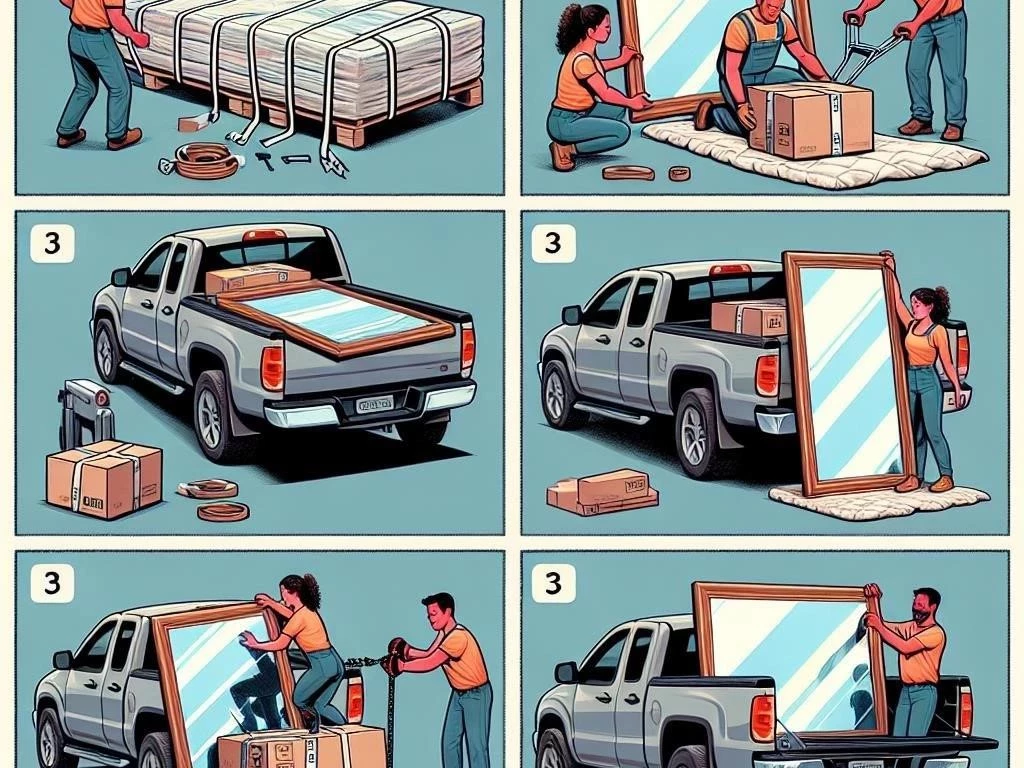Transporting a mirror requires careful planning and execution‚ ensuring safety through proper packing‚ secure positioning‚ and utilizing the right tools for protection during transit․
Transporting a mirror in a pickup truck can be a daunting task․ Mirrors are often fragile and can easily break if not handled with care․ Proper precautions and techniques are essential to ensure safe transportation․ This process involves gathering the right tools‚ such as straps and padding‚ to secure the mirror during the journey․ Understanding weight distribution is crucial for stability‚ while also considering visibility for safe driving․ Additionally‚ weather conditions can pose risks‚ necessitating protective covers․ By following the right steps‚ including loading‚ unloading‚ and securing the mirror‚ you can minimize the risk of damage or breakage during transportation‚ making the experience smooth and efficient․
Importance of Safe Transportation
Safe transportation of a mirror is crucial to prevent damage and ensure its longevity․ Mirrors are typically made of glass‚ making them susceptible to breakage during transit․ By prioritizing safety‚ you protect not just the mirror but also the occupants of the vehicle and other road users․ Proper handling and secure positioning in the pickup truck reduce the risk of shifting‚ which can lead to accidents or injuries․ Additionally‚ safeguarding the mirror with padding and using tie-downs provides stability‚ further enhancing protection․ Ultimately‚ taking the necessary precautions during loading‚ unloading‚ and the journey itself is essential for a smooth transportation experience without unforeseen issues․
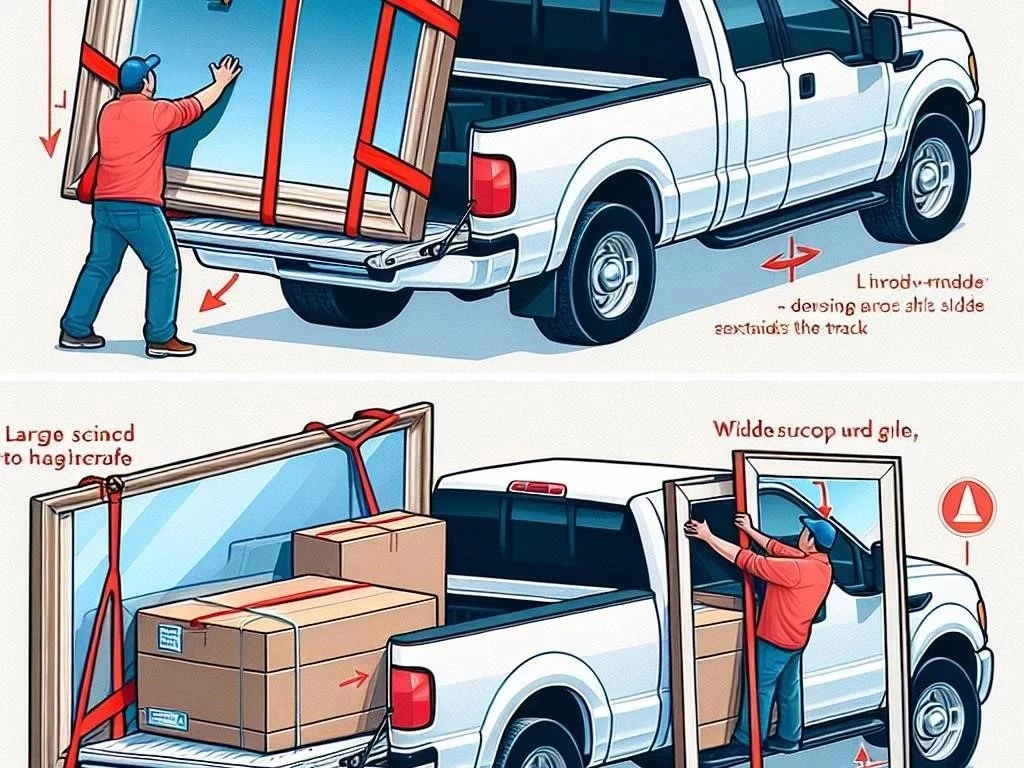
Types of Mirrors
Understanding the different types of mirrors is essential for effective transportation․ Common types include wall mirrors‚ vanity mirrors‚ and car side mirrors‚ each with unique shapes and sizes․ Wall mirrors can be large and heavy‚ requiring additional support and careful handling during transport․ Vanity mirrors‚ often smaller‚ may still be fragile‚ necessitating proper padding and secure positioning․ Car side mirrors‚ while less bulky‚ can be vulnerable to damage if not secured correctly․ Each type demands specific precautions‚ such as tailored packing‚ to ensure protection against breakage․ Recognizing these differences enables you to prepare adequately for transporting mirrors safely‚ minimizing risks and ensuring a successful journey․
Preparing for the Journey
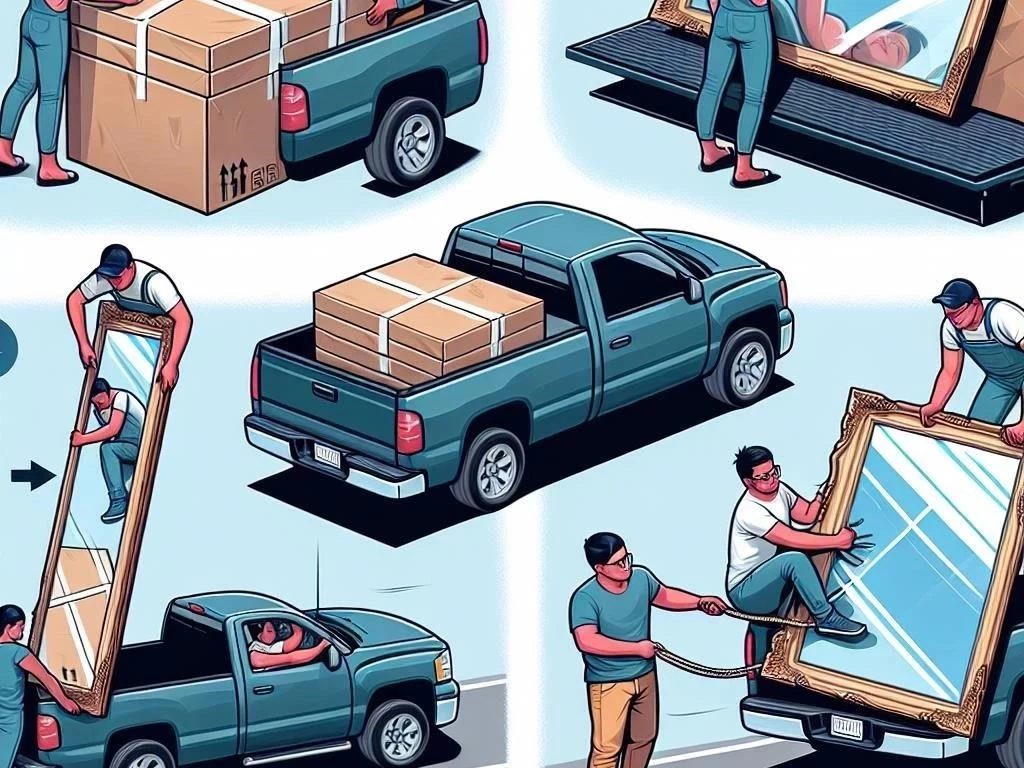
Preparation is key to successfully transporting a mirror in a pickup truck․ Begin by assessing the size and weight of the mirror‚ as this information will guide your packing and securing process․ Choose the right pickup truck‚ ensuring it has ample space to accommodate the mirror without cramping․ Gather all necessary tools and materials‚ including padding for protection‚ straps for securing‚ and a weather cover if needed․ Double-check that the mirror is clean and free of any debris before packing․ Consider the journey’s length and potential environmental factors‚ such as weather conditions‚ to ensure that appropriate precautions are in place for safe transportation throughout․
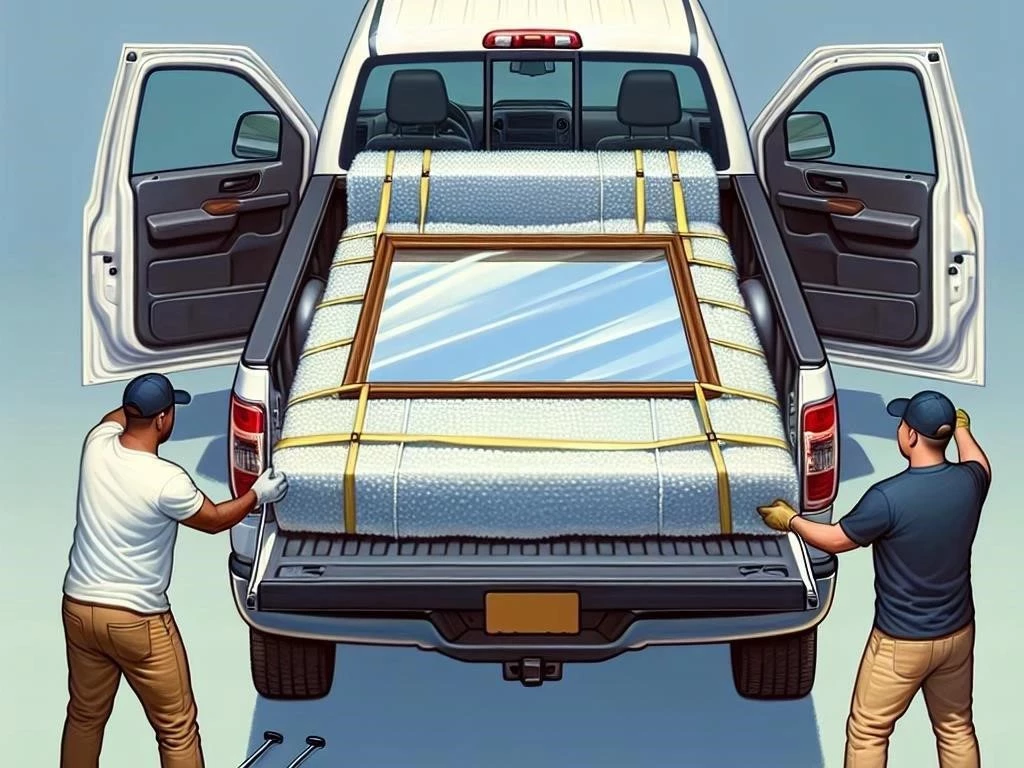
4․1․ Choosing the Right Pickup Truck
Selecting the appropriate pickup truck is vital for transporting a mirror securely․ Start by considering the size of the mirror; a larger mirror will require a truck with a spacious bed to prevent cramping․ Ensure the truck can handle the weight of the mirror without compromising stability․ Look for a truck with a flat‚ sturdy bed that provides a solid foundation during transportation․ Additionally‚ consider the truck’s tie-down points‚ as these will help secure the mirror effectively․ Some trucks also offer weather protection features‚ which can be beneficial for safeguarding the mirror during unexpected rain or adverse weather conditions throughout the journey․ A well-chosen truck enhances safety significantly․
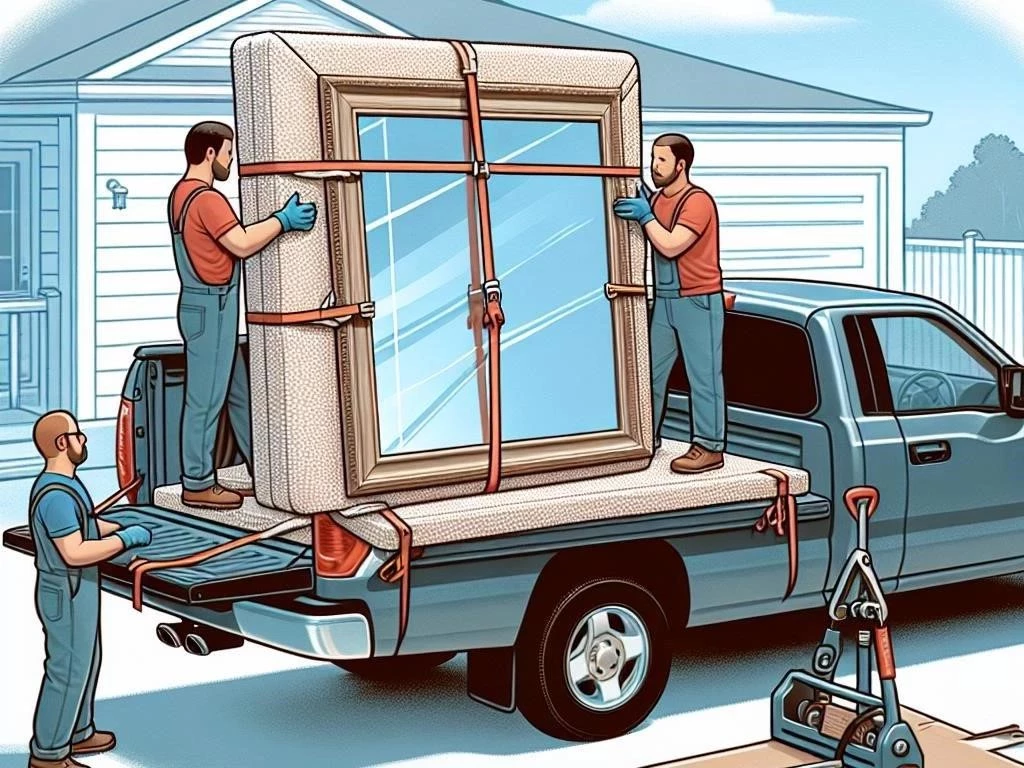
4․2․ Assessing Mirror Size and Weight
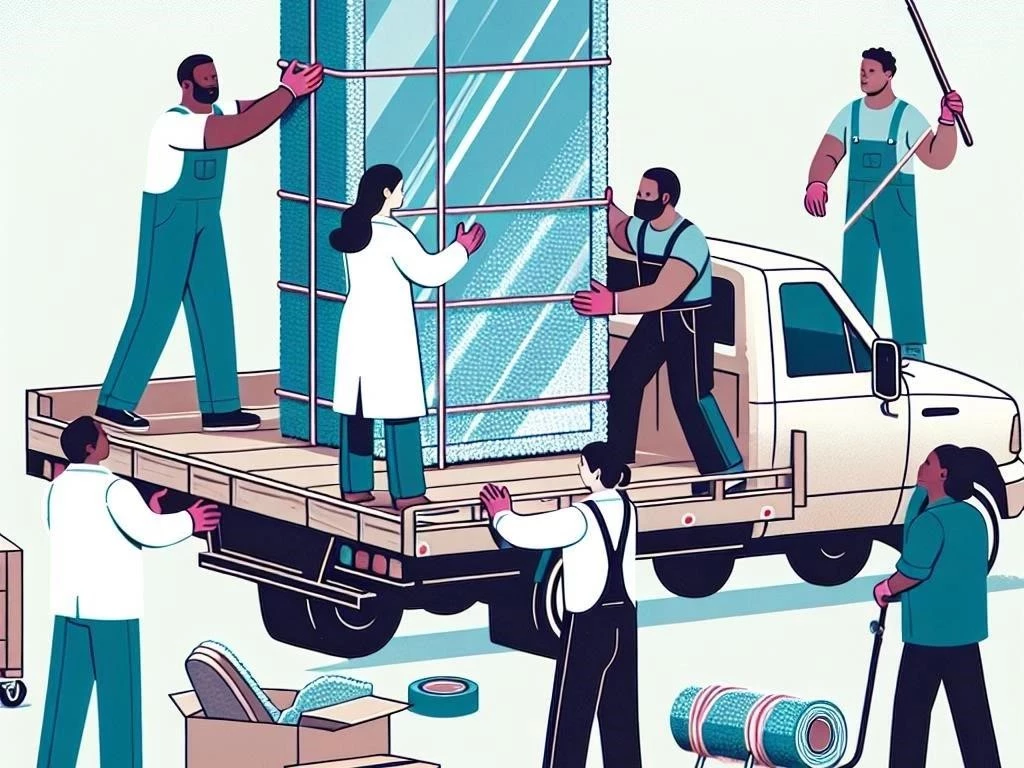
Assessing the size and weight of the mirror is crucial before transportation․ Start by measuring the mirror’s dimensions‚ including height‚ width‚ and thickness‚ to ensure it fits securely within the pickup truck․ Knowing the weight is equally important since heavier mirrors require additional support and stable positioning during transport․ Consider the type of frame‚ as some materials add extra weight․ If the mirror has delicate glass or an intricate design‚ extra precautions must be taken to prevent damage․ This assessment helps in gathering the right padding materials and choosing appropriate tie-downs․ Proper planning ensures that proper balance and stability are maintained during the entire transportation process․
Gathering Necessary Tools and Materials
Collecting the right tools and materials is essential for a successful mirror transport․ Start with high-quality straps and tie-downs‚ which are crucial for securing the mirror and preventing movement during the journey․ Select padding materials like moving blankets or bubble wrap to provide protection against impacts and scratches․ A weather protective cover is also advisable‚ especially if there is a chance of rain or adverse conditions‚ offering additional security against moisture․ Additionally‚ consider having basic tools on hand‚ such as scissors for cutting straps and a dolly for easier loading and unloading․ These items collectively ensure a smooth‚ damage-free experience while transporting the mirror in your pickup truck․
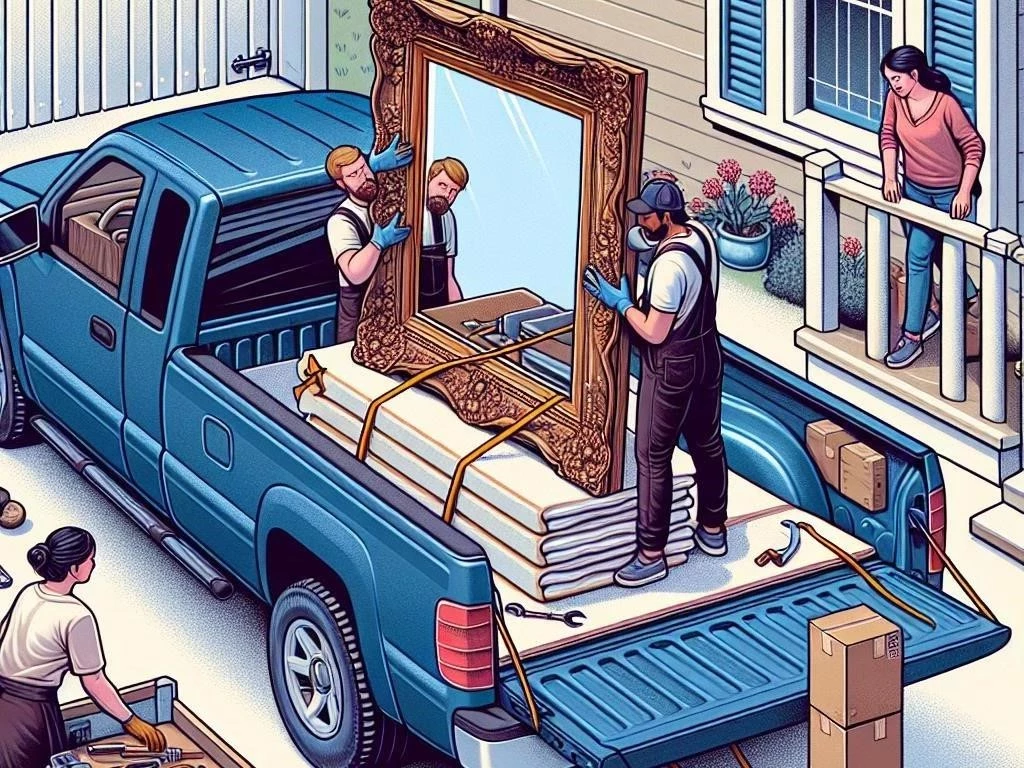
5․1․ Straps and Tie-Downs
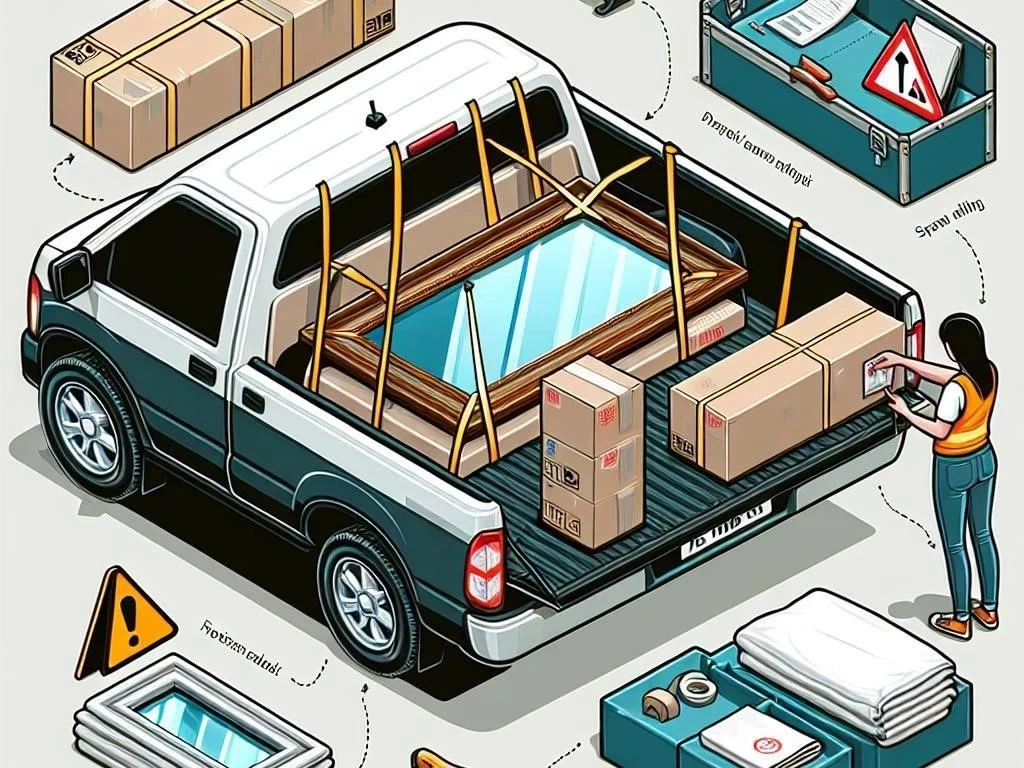
Straps and tie-downs are essential for securely transporting a mirror in a pickup truck․ Choose high-quality‚ durable straps that can withstand the mirror’s weight and keep it firmly in place during transit․ Ratchet straps are particularly effective‚ as they provide adjustable tension and a secure hold․ When using tie-downs‚ ensure they are anchored properly to the truck’s bed‚ utilizing designated tie-down points for maximum stability․ Position the mirror vertically‚ if possible‚ as this reduces the risk of breakage․ After securing the mirror‚ double-check the tightness of the straps to prevent any shifting․ Proper use of straps and tie-downs enhances safety and minimizes the risk of damage during the journey․
5․2․ Padding for Protection
Using padding for protection is crucial when transporting a mirror in a pickup truck․ Select high-quality materials such as moving blankets‚ bubble wrap‚ or foam padding to shield the mirror from impacts and scratches․ Wrap the mirror thoroughly‚ ensuring all surfaces are covered‚ especially the edges‚ which are more vulnerable to damage․ This cushioning absorbs shocks during transit‚ reducing the risk of breakage․ When utilizing padding‚ avoid placing heavy objects on top of the wrapped mirror to maintain its integrity․ Secure the padding with tape‚ but ensure it does not stick to the mirror’s surface․ Adequate padding significantly enhances safety‚ providing peace of mind throughout the transportation process․
5․3․ Weather Protective Cover
A weather protective cover is essential for safeguarding a mirror during transport‚ especially in unpredictable conditions; Choose a durable‚ waterproof cover that fits snugly over the mirror‚ providing a barrier against rain‚ snow‚ or moisture․ This extra layer of protection prevents water damage‚ which can weaken the mirror’s integrity or cause mold․ Ensure the cover is lightweight yet robust enough to withstand wind and other elements while driving․ Fasten the cover securely to avoid it blowing off during transit․ Additionally‚ consider using reflective covers that protect against direct sunlight‚ preventing warping or temperature-related damage․ A weather protective cover significantly enhances the mirror’s safety throughout the journey․
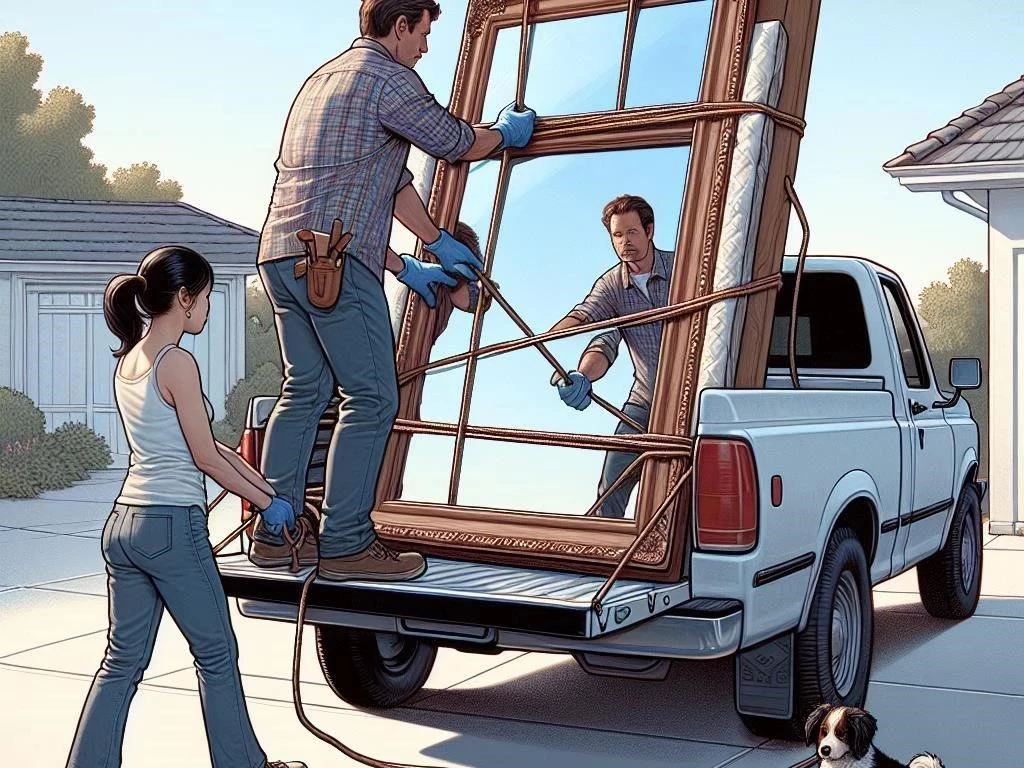
Packing the Mirror for Transport
Packing the mirror properly for transport is crucial to prevent damage․ Start by laying the mirror face down on a soft surface‚ such as a moving blanket‚ to protect its front․ Use padding materials like bubble wrap or foam to cover the mirror entirely‚ ensuring that edges are well-protected․ Secure the padding with tape‚ but avoid sticking it directly to the mirror’s surface․ If the mirror has a frame‚ ensure the padding is thick enough to cushion it adequately as well․ Once wrapped‚ place the mirror vertically in the pickup truck for maximum stability․ This position minimizes the risk of breakage during transit‚ ensuring a secure and safe journey․
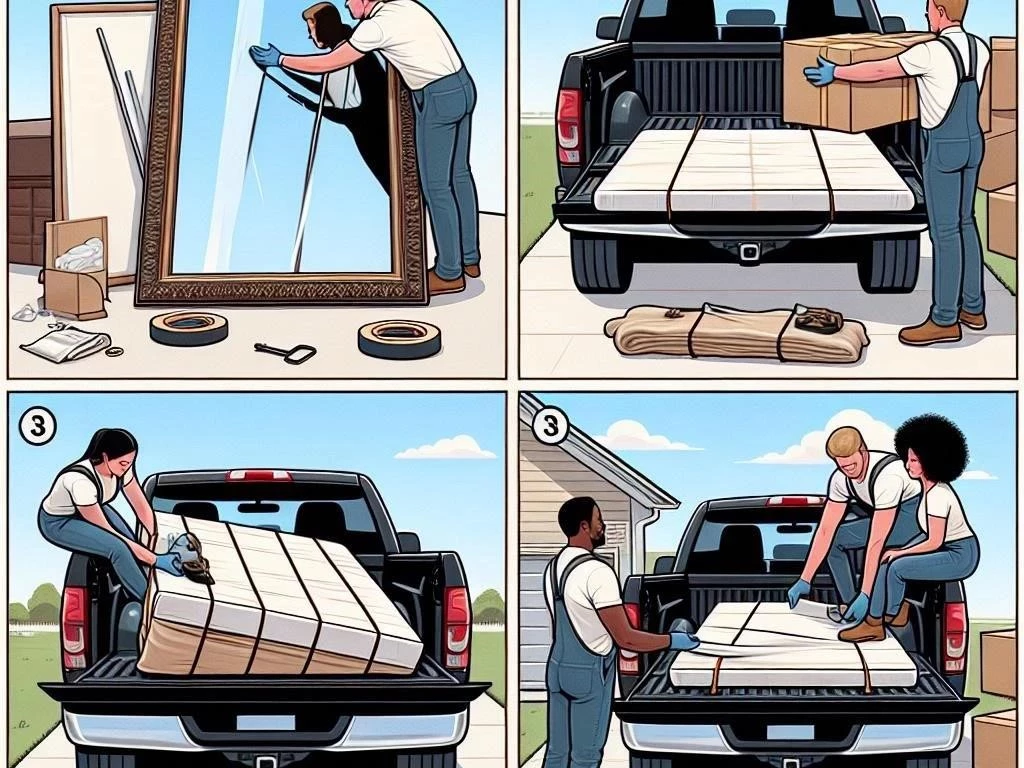
6․1․ Using Padding for Stability
Using padding for stability is essential when transporting a mirror in a pickup truck․ Begin by selecting high-quality padding materials like moving blankets‚ bubble wrap‚ or foam․ Wrap the mirror thoroughly‚ focusing on the corners and edges‚ as these areas are most susceptible to damage․ This added cushioning helps absorb shocks during transit‚ reducing the risk of breakage․ When positioning the mirror‚ ensure it stands upright in the truck bed‚ as this orientation offers maximum support․ Additionally‚ place extra padding around the mirror to fill any gaps‚ preventing movement․ Properly securing the mirror with padding enhances stability‚ ensuring a safe and worry-free transport experience throughout the journey․
6․2․ Positioning the Mirror Correctly
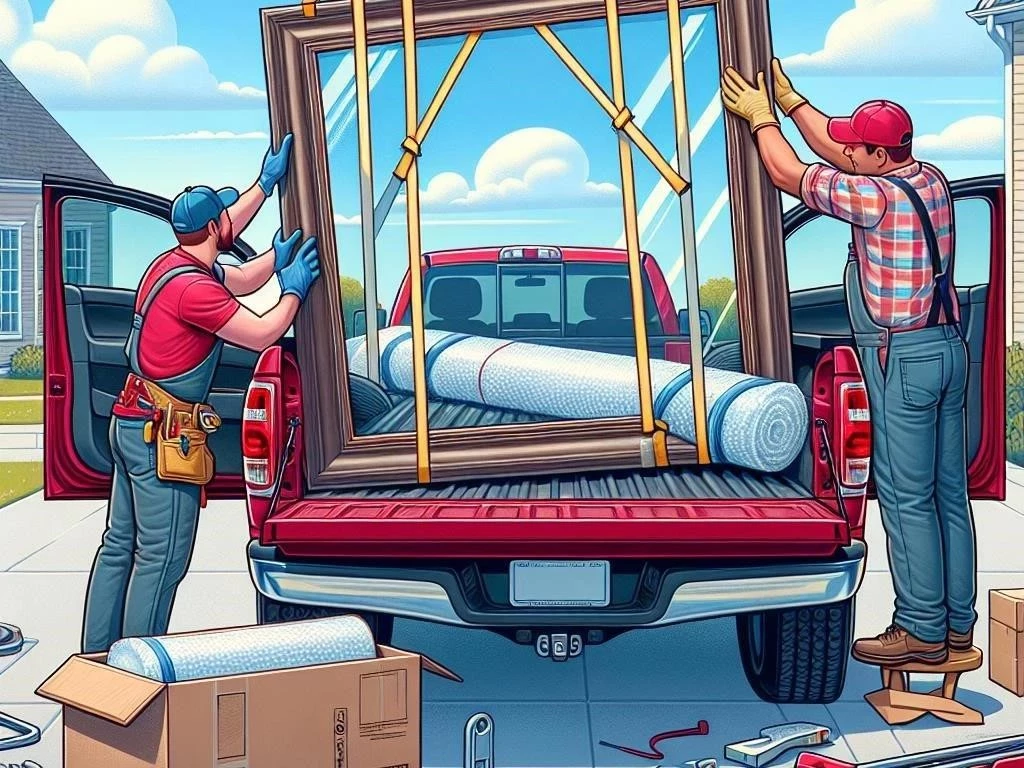
Positioning the mirror correctly in the pickup truck is crucial for safe transport․ Ideally‚ the mirror should be placed upright to minimize the risk of breakage․ Ensure that it is positioned against a sturdy surface‚ like the truck’s side wall‚ to prevent it from shifting during transit․ If the mirror is large‚ consider using additional support‚ such as securing it with padding or placing it between two soft objects‚ which can act as stabilizers․ Avoid laying the mirror flat‚ as this increases the likelihood of damage from weight or pressure․ Proper positioning not only enhances stability but also contributes to overall safety during the journey‚ ensuring its protection․
Loading the Mirror into the Pickup Truck
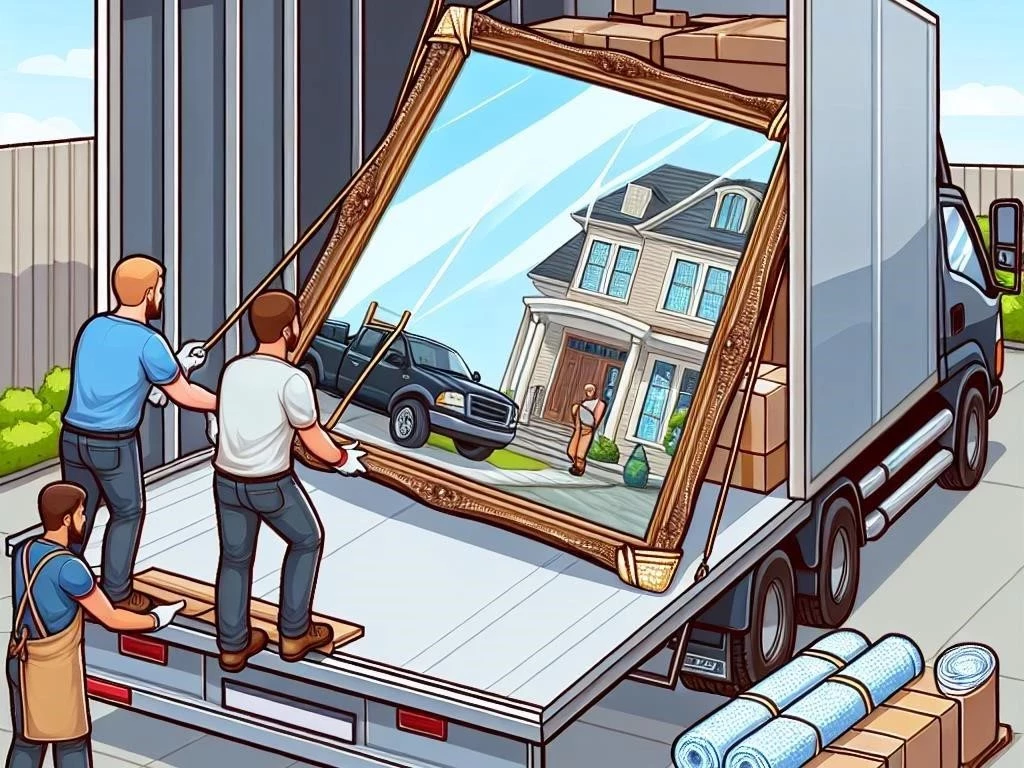
Loading the mirror into the pickup truck requires careful handling to prevent damage․ Begin by ensuring that the truck bed is clean and clear of any debris that could scratch the mirror․ With assistance‚ carefully lift the mirror using both hands‚ ensuring a firm grip on the padded edges․ If the mirror is heavy or large‚ consider using a dolly for easier maneuvering․ Position the mirror upright as you load it into the truck‚ placing it against a sturdy side wall for support․ Once loaded‚ double-check that it is stable and secure before closing the truck bed․ Proper loading practices significantly reduce the risk of damage during transportation․
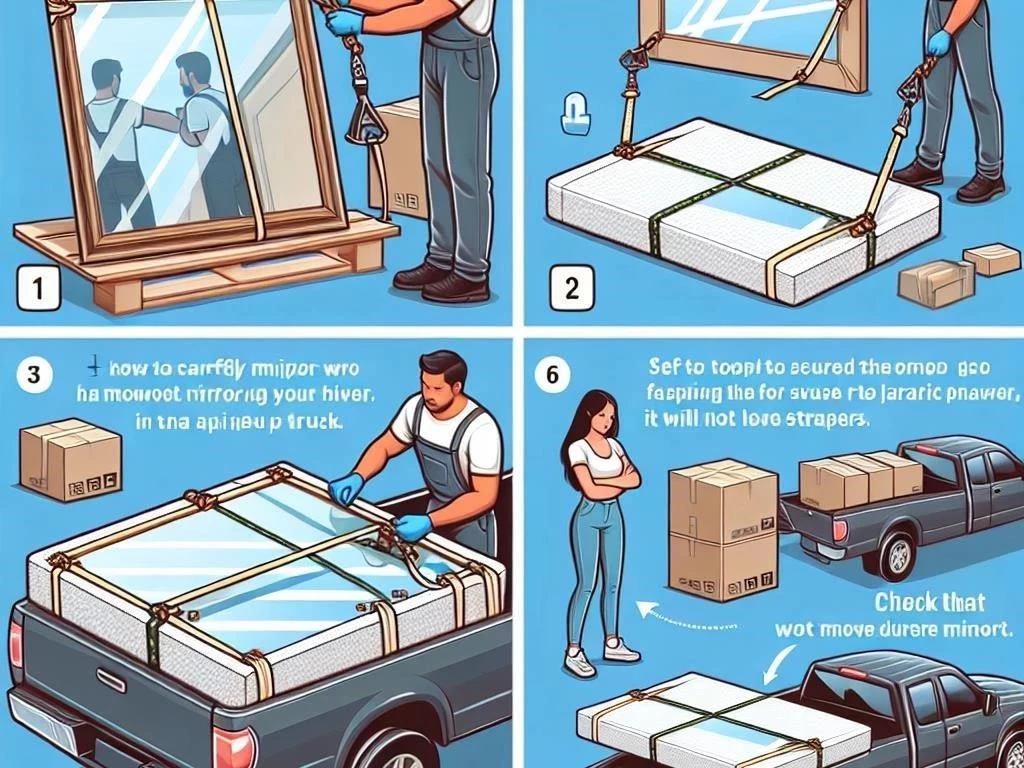
7․1․ Maneuvering the Mirror Safely
Maneuvering the mirror safely is a critical step in the loading process․ Always approach the mirror with caution‚ ensuring you have a clear path to the pickup truck․ Use proper lifting techniques by bending at the knees and keeping your back straight to avoid injury․ When lifting‚ grasp the mirror firmly at its edges‚ not the glass surface‚ to prevent accidental breakage․ Move slowly and deliberately‚ communicating with your assistant if you have one․ Avoid sudden movements‚ which can lead to slips and drops․ Once you reach the truck‚ tilt the mirror slightly to guide it into the bed‚ ensuring it remains upright throughout the maneuvering process for safety․
7․2․ Weight Distribution Considerations
Weight distribution is a vital factor when transporting a mirror in a pickup truck․ Proper distribution enhances stability and prevents swaying during transit․ Position the mirror towards the front of the truck bed‚ near the cab‚ as this helps balance the load and improves handling․ Ensure that the weight is evenly distributed across the truck’s bed to avoid putting excessive strain on one side․ If additional items are being transported‚ place heavier items below or alongside the mirror‚ ensuring they do not shift during movement․ Adequate weight distribution contributes significantly to driving safety and minimizes the risk of damage to the mirror throughout the journey․
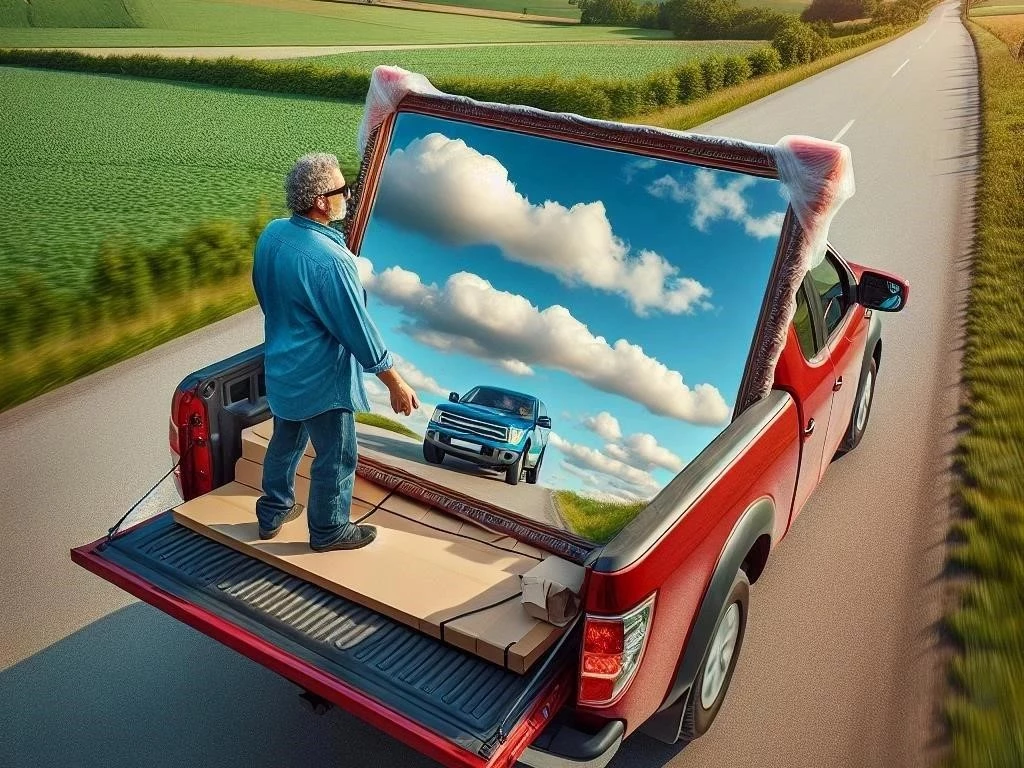
Securing the Mirror in Place
Securing the mirror in place is essential to ensure safe transportation in the pickup truck․ Begin by using high-quality straps or tie-downs to fasten the mirror securely to the truck bed․ Start by looping the straps over the mirror‚ positioning them directly over the padded areas to avoid damaging the surface․ Ratchet straps are particularly effective‚ allowing for adjustable tension that holds the mirror firmly in place․ Ensure that the straps are tight but not overly constricting‚ which can cause stress on the mirror․ After securing‚ double-check the tightness of all tie-downs to prevent any movement during transit‚ ensuring a safe and worry-free journey․
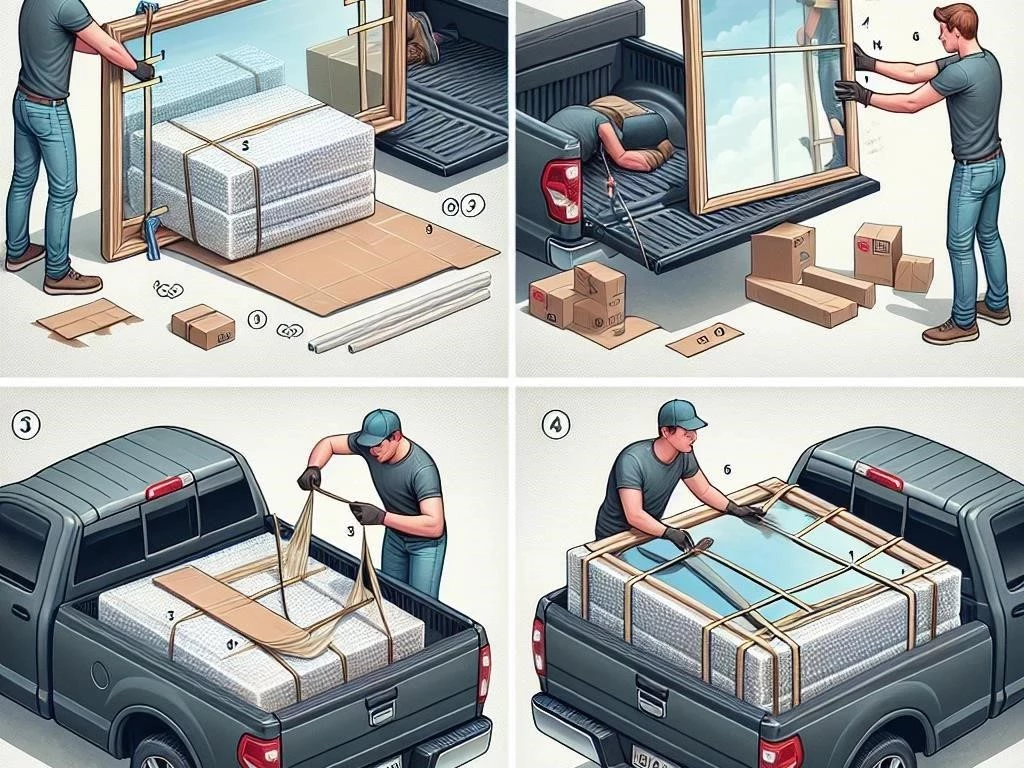
8․1․ Using Straps for Stability
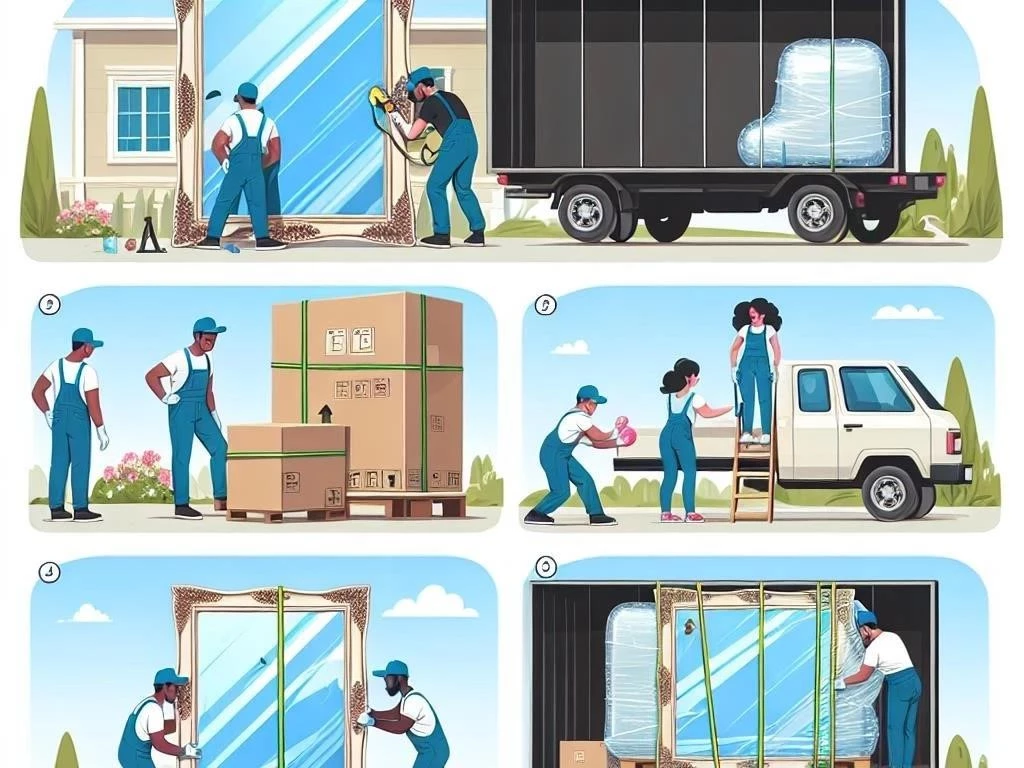
Using straps for stability is crucial when transporting a mirror in a pickup truck․ Select high-strength‚ adjustable straps designed for heavy loads to ensure reliability․ Begin by placing the mirror in an upright position against the truck’s side wall for optimal support․ Next‚ secure the straps over the mirror‚ ensuring they are positioned over padded areas to prevent damage․ Utilize ratchet straps‚ which offer excellent tension control‚ allowing you to tighten the straps without excessive force․ Make sure the straps are anchored to the truck’s designated tie-down points for maximum stability․ Periodically check the tension during the journey‚ adjusting as necessary to maintain security and prevent shifting․
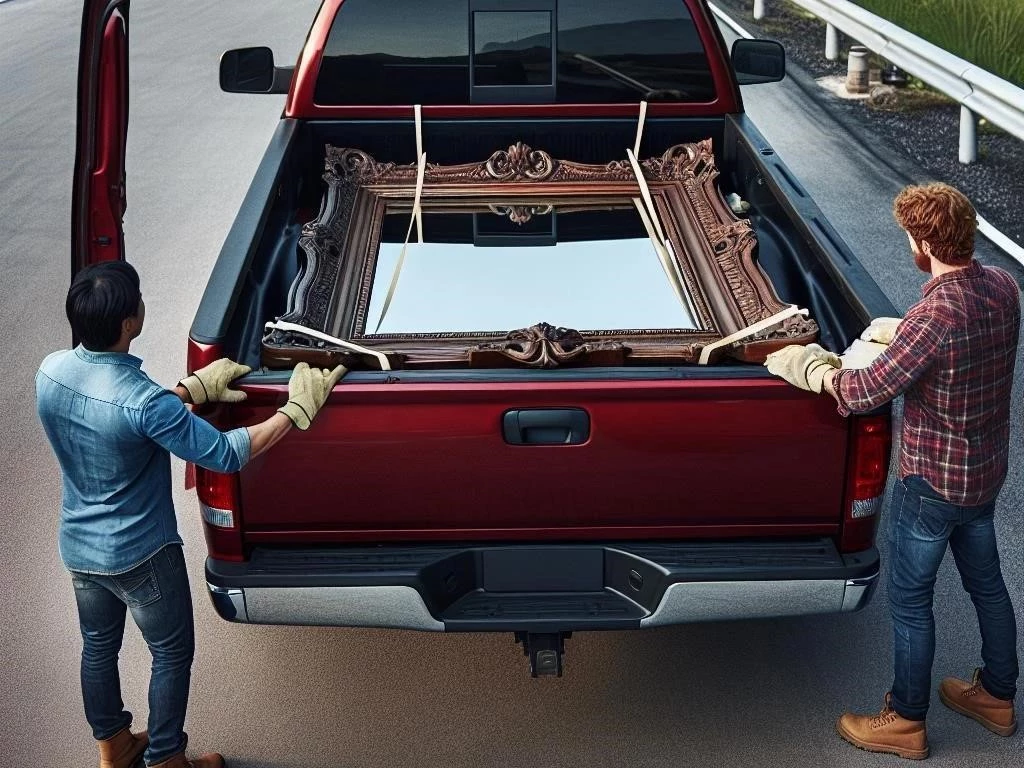
8․2․ Double-Checking Tie-Downs
Double-checking tie-downs is a critical step to ensure the safe transportation of a mirror in a pickup truck․ After securing the mirror with straps‚ take a moment to inspect each tie-down for tightness and stability․ Gently tug on the straps to confirm they are firmly anchored and not loose․ Ensure that the straps are not twisted or tangled‚ as this can compromise their effectiveness․ Additionally‚ verify that the straps are secured to the truck’s designated tie-down points‚ enhancing overall stability․ Before starting your journey‚ conduct this check one last time․ Properly secured tie-downs significantly reduce the risk of damage‚ providing peace of mind during transport․
During the Journey
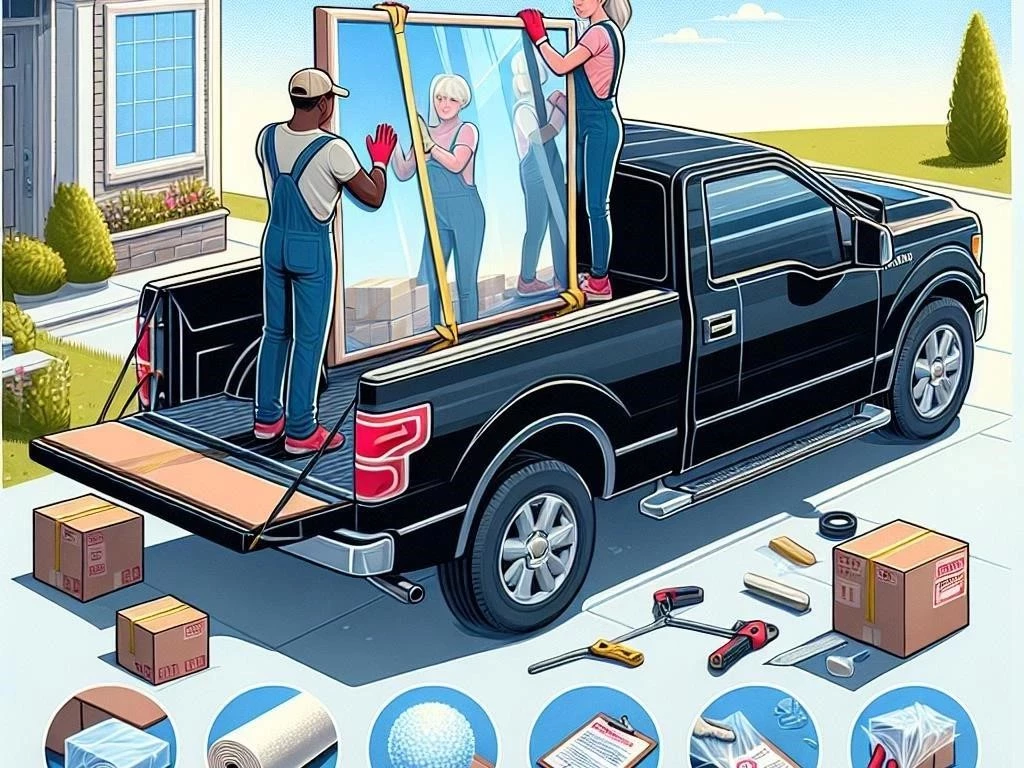
During the journey‚ it’s essential to remain vigilant to ensure the mirror remains secure and undamaged; Begin by driving at a moderate speed to minimize vibrations and jolts that could affect the mirror․ Regularly check your rearview mirrors for visibility‚ ensuring the mirror is not obstructed․ Be mindful of road conditions‚ avoiding potholes and bumps that may cause excessive movement․ If traveling in adverse weather‚ take extra precautions‚ such as slowing down and maintaining a safe distance from other vehicles․ Additionally‚ periodically stop to visually inspect the mirror and tie-downs‚ making adjustments as necessary․ Staying attentive during the journey enhances safety and ensures successful transport of the mirror․
9․1․ Maintaining Visibility
Maintaining visibility is crucial while transporting a mirror in a pickup truck․ Ensure that the mirror does not obstruct your view from the rearview or side mirrors‚ as this can lead to unsafe driving conditions․ Position the mirror so that it is secured against the truck’s side without blocking your line of sight․ If necessary‚ adjust the angle of the mirror to achieve optimal visibility․ Additionally‚ if the mirror is large‚ consider using a wide load sign to alert other drivers and enhance safety․ Regularly check your mirrors to ensure clear visibility throughout the journey․ Maintaining visibility not only aids in safe driving but also protects the mirror during transport․
9․2․ Driving with Caution
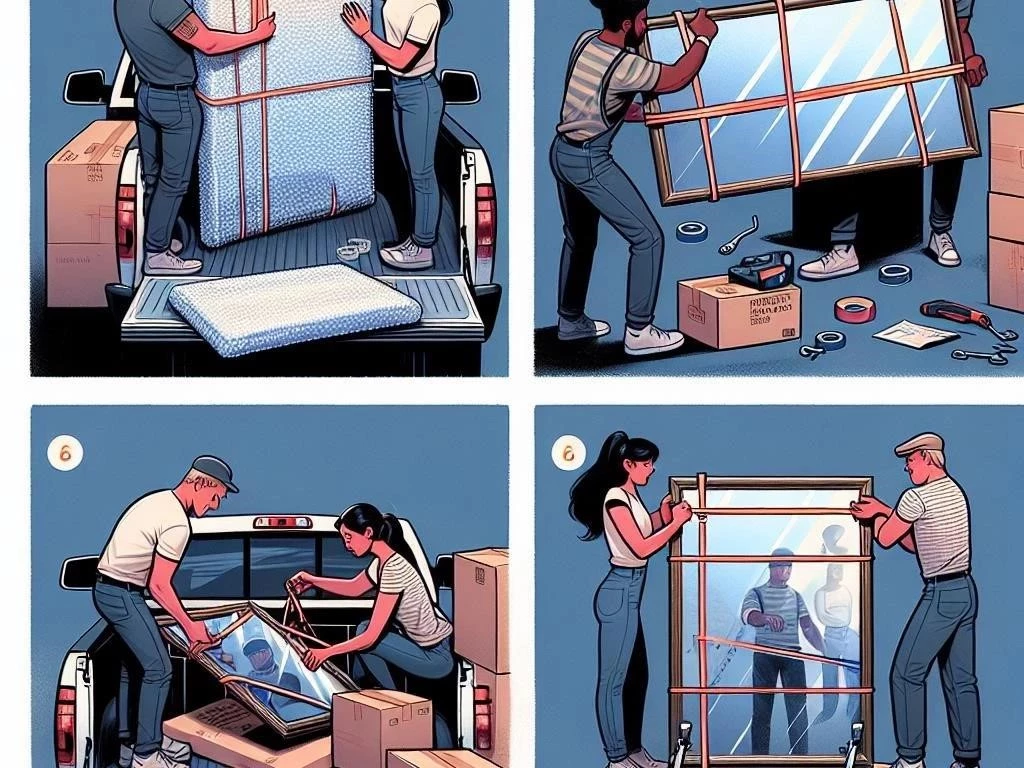
Driving with caution is essential when transporting a mirror in a pickup truck to prevent accidents and damage․ Maintain a moderate speed to reduce vibrations and swaying that could affect the mirror’s stability․ Keep a safe distance from other vehicles to allow for sudden stops or maneuvers․ Avoid sharp turns and sudden lane changes‚ as these can destabilize the load․ Be particularly careful on uneven or bumpy roads‚ which may cause excessive jolting․ Use turn signals well in advance to communicate your intentions to other drivers․ By driving cautiously‚ you not only protect the mirror but also ensure a safer journey for yourself and others on the road․
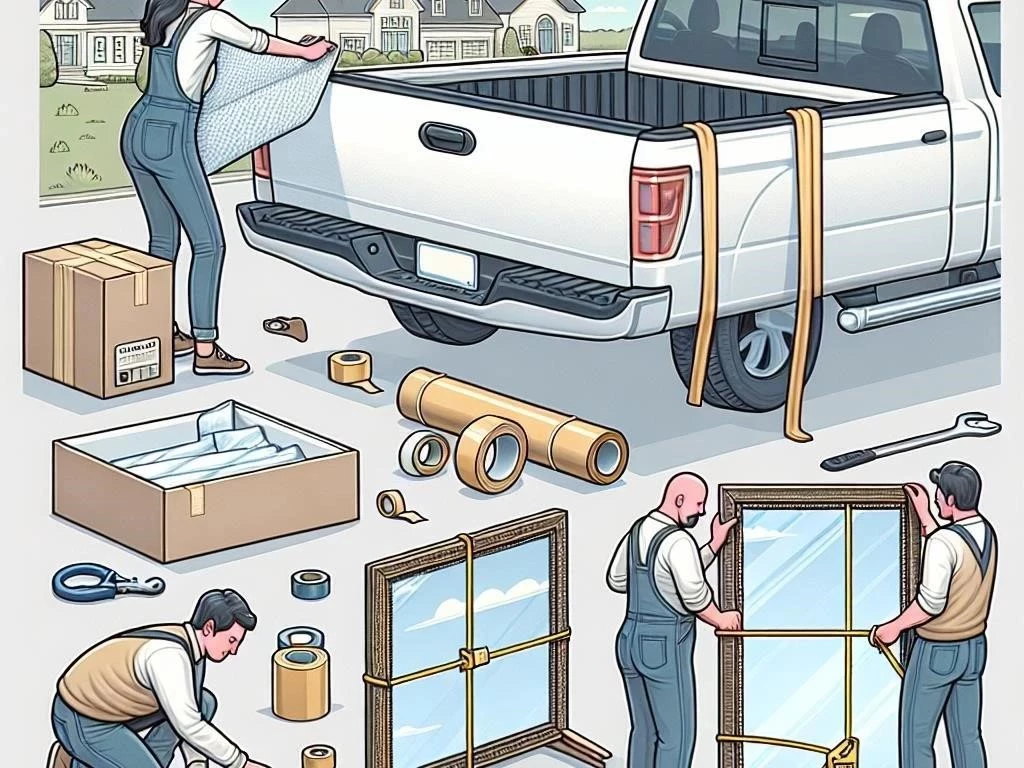
9․3․ Monitoring Weather Conditions
Monitoring weather conditions is vital when transporting a mirror in a pickup truck to prevent potential damage․ Before starting your journey‚ check the forecast for rain‚ snow‚ or strong winds that could affect stability․ If adverse weather is expected‚ consider postponing the transport or using a weatherproof cover to protect the mirror․ During your drive‚ stay alert to changing conditions‚ such as sudden rain or gusts of wind that could impact visibility and handling․ Adjust your driving speed accordingly and maintain a safe distance from other vehicles․ Being proactive about weather conditions not only protects the mirror but also ensures a safer and more comfortable journey overall․
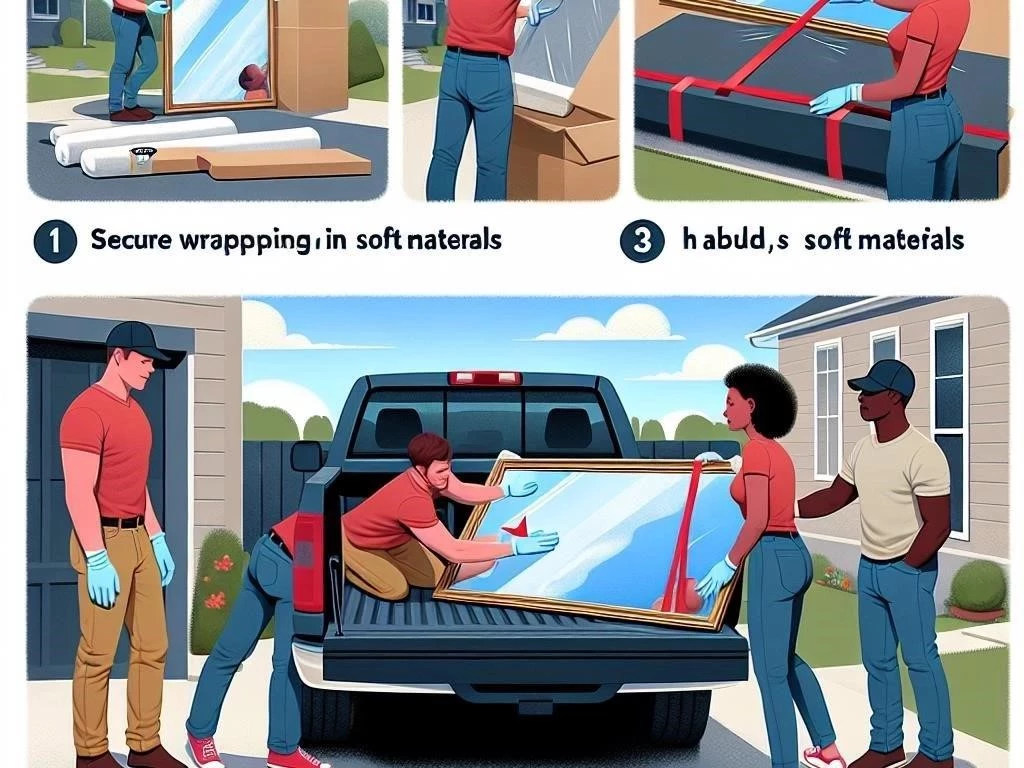
Unloading the Mirror
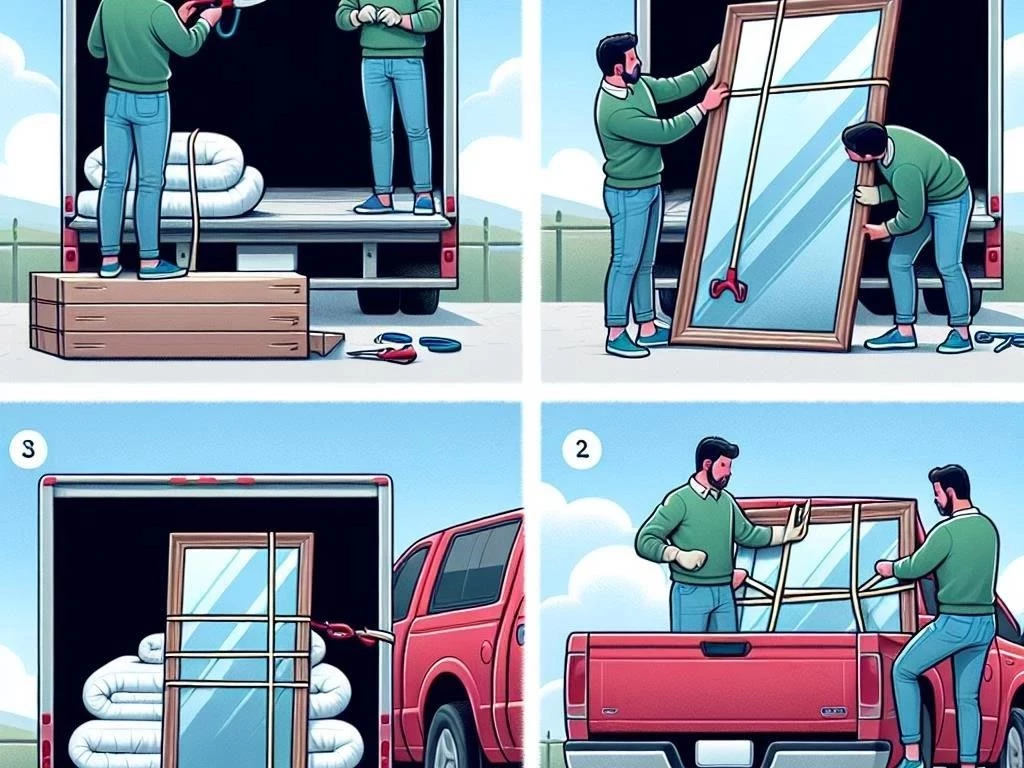
Unloading the mirror carefully is as important as loading it to prevent damage․ Begin by ensuring the truck is parked on a flat‚ stable surface to avoid any accidents․ Before removing the straps or tie-downs‚ take a moment to inspect the mirror for any signs of damage․ With assistance‚ gently lift the mirror while maintaining a firm grip on its edges․ If the mirror is large or heavy‚ consider using a dolly to facilitate movement․ Position the mirror upright as you lower it to prevent any bending or breaking․ Always keep the mirror steady during unloading to avoid sudden shifts that could lead to accidents․ Proper unloading ensures the mirror arrives safely at its destination․
10․1․ Safe Unloading Techniques
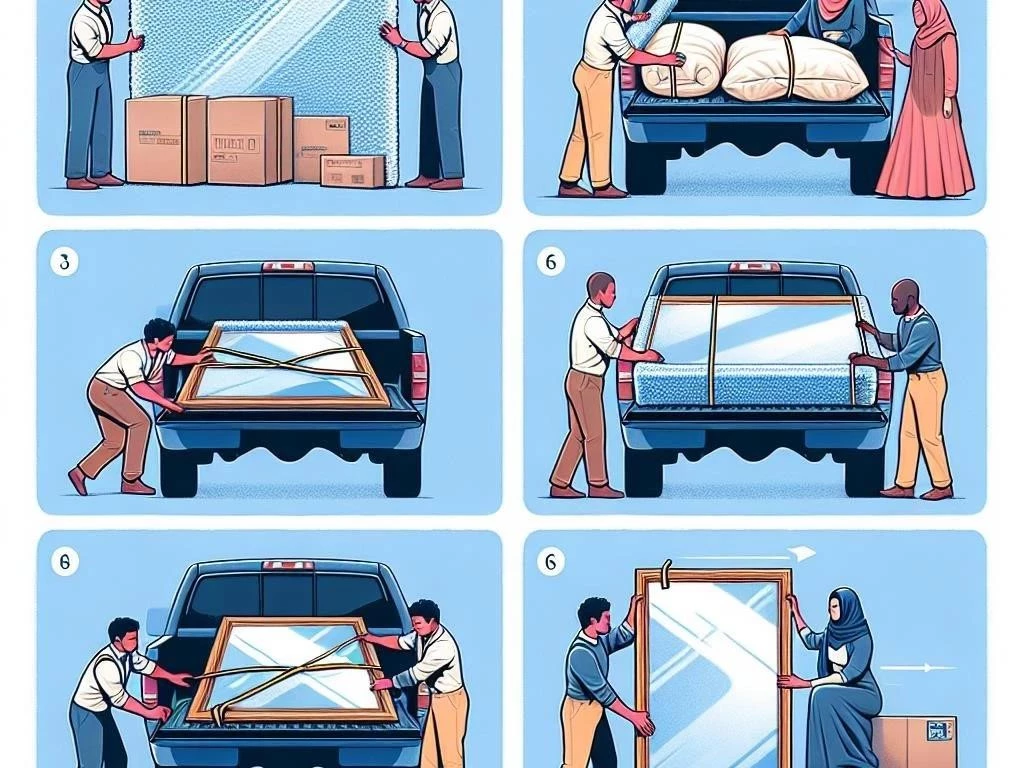
Safe unloading techniques are crucial when transporting a mirror in a pickup truck․ Start by ensuring that the area around the truck is clear of obstacles to prevent tripping hazards․ Before removing any straps‚ double-check that the mirror is stable and secure․ With an assistant‚ both of you should grip the mirror firmly by its edges‚ avoiding the glass surface․ Use smooth‚ coordinated movements to lower the mirror while maintaining its upright position․ If applicable‚ utilize a dolly to assist in moving the mirror from the truck to its destination․ Avoid sudden movements during unloading‚ as this can lead to slips or drops‚ ensuring a safe and successful transfer․
10․2․ Handling for Damage Prevention
Handling the mirror carefully during unloading is essential for damage prevention․ Begin by assessing the mirror’s condition before moving it‚ checking for any signs of stress or cracks․ Always grasp the mirror firmly at its edges‚ avoiding contact with the glass surface to reduce the risk of breakage․ When moving the mirror‚ maintain an upright position and move slowly to ensure stability․ If you’re navigating through tight spaces‚ communicate with your assistant to ensure coordinated movements․ Use protective padding if necessary to buffer against any potential impacts during the unloading process․ By prioritizing careful handling‚ you can significantly minimize the risk of damage during this critical phase․
Storage Tips After Transportation
Storage tips after transportation are essential to maintain the integrity of the mirror․ First‚ find a suitable storage location that is cool‚ dry‚ and free from direct sunlight‚ which can cause fading or warping over time․ Place the mirror upright to avoid pressure on the glass‚ using protective padding or blankets around it for additional cushioning․ If storing in a garage or shed‚ ensure that the area is free from clutter to prevent accidental impacts․ Consider using a mirror storage case for added protection․ Regularly check the storage environment for humidity or temperature changes that could affect the mirror’s condition‚ ensuring it remains in excellent shape․
11․1․ Proper Storage Positioning
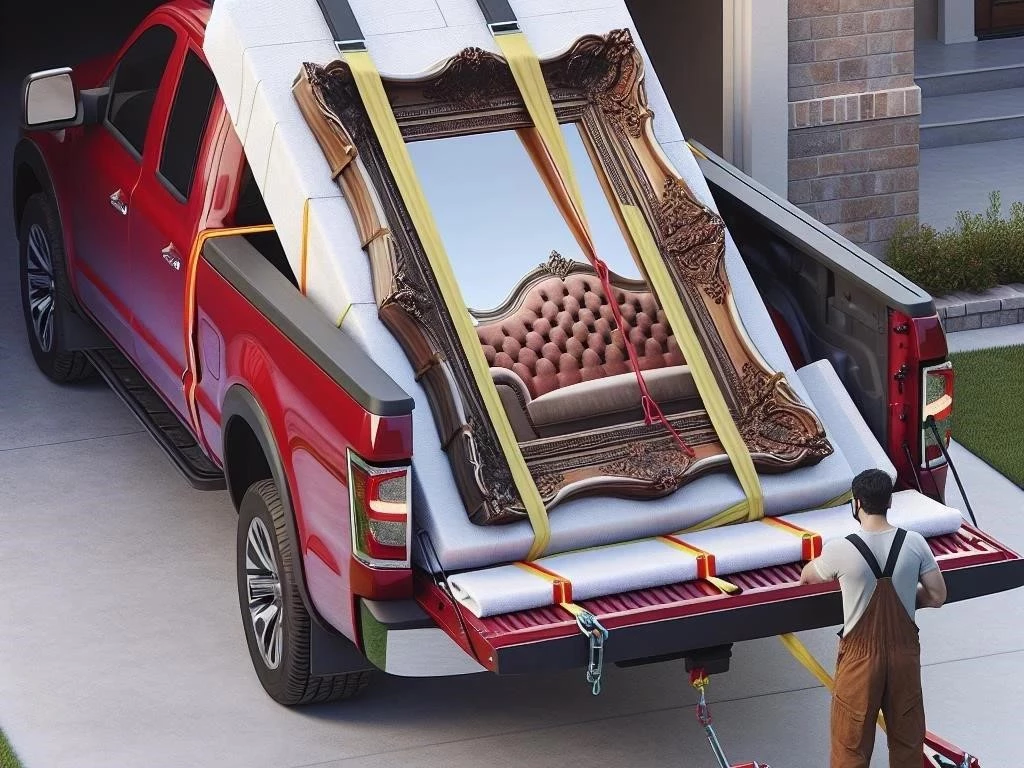
Proper storage positioning is vital for maintaining the mirror’s condition after transportation․ Always store the mirror upright rather than flat‚ as this minimizes the risk of warping or pressure-related damage․ Ensure that it is placed against a stable surface‚ such as a wall‚ to prevent it from tipping over․ Use padding or blankets around the mirror to provide extra cushioning and prevent scratches․ If storing multiple mirrors‚ avoid stacking them directly on top of each other․ Instead‚ use vertical dividers or shelving to create individual compartments for each mirror․ This positioning not only protects the mirrors but also facilitates easy access whenever needed‚ ensuring their longevity․
11․2․ Long-term Protection Measures
Long-term protection measures are essential for preserving the mirror’s quality after transportation․ First‚ consider applying a protective film or coating to the glass surface‚ which can guard against scratches and minor impacts․ Store the mirror in a climate-controlled environment to prevent damage from extreme temperatures or humidity․ Utilize a dedicated mirror storage case with padding to keep it secure when not in use․ Regularly inspect the mirror for any signs of wear or damage‚ addressing issues promptly to prevent further deterioration․ Additionally‚ avoid placing heavy items nearby that could accidentally fall and cause damage․ Implementing these measures ensures the mirror remains in optimal condition for years to come․
